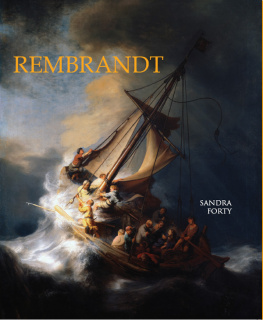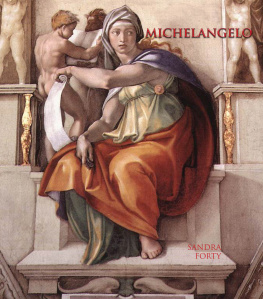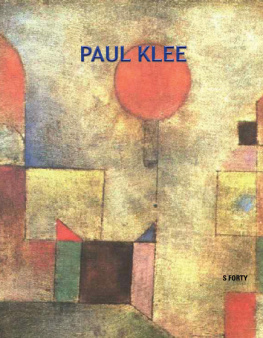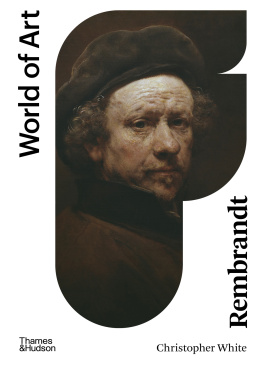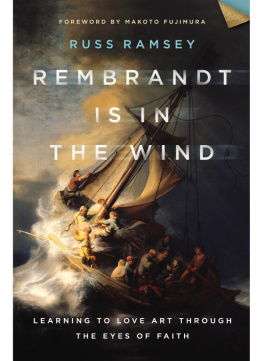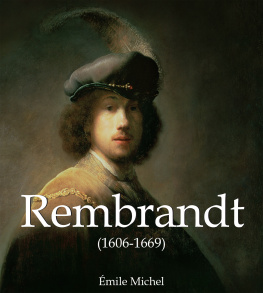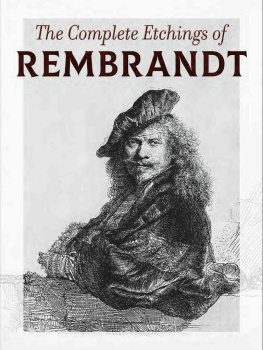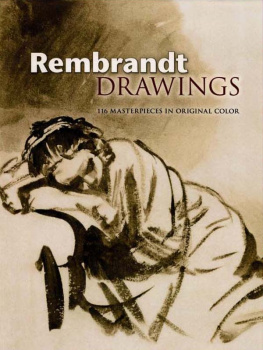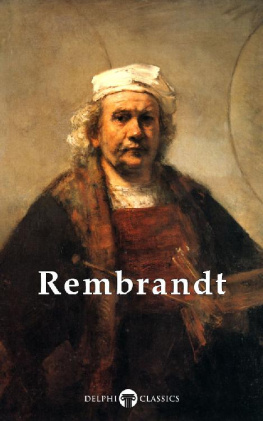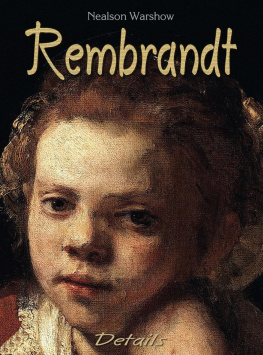
REMBRANDT
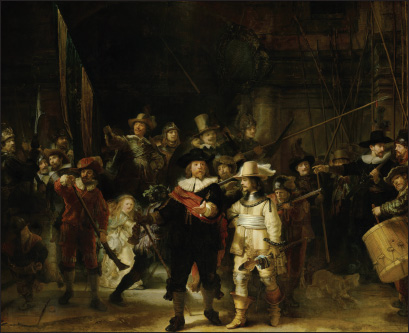
T&J
Published by TAJ Books International LLC 2014
5501 Kincross Lane
Charlotte, North Carolina, USA
28277
www.tajbooks.com
www.tajminibooks.com
Copyright 2014 TAJ Books International LLC
All rights reserved. No part of this publication may be reproduced, stored in a retrieval system, or transmitted in any form or by any means, electronic, mechanical, photocopying, recording, or otherwise, without the prior written permission of the Publisher and copyright holders. The Publisher wishes to thank Johnbod.
All notations of errors or omissions (author inquiries, permissions) concerning the content of this book should be addressed to .
ISBN 978-1-84406-328-4
Paperback 978-1-62732-019-1
Printed in China
1 2 3 4 5 18 17 16 15 14
REMBRANDT
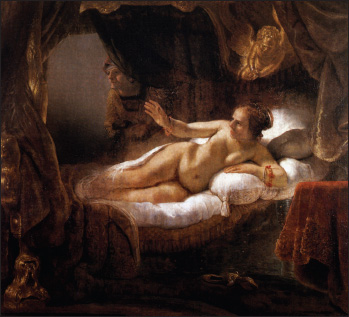
T&J
S A N D R A F O R T Y
16061669
R embrandt is indisputably the greatest artist of the 17th century, and many would say the greatest artist of all time. His mastery of composition, paint, and linehe was a superlative etcherover a lifetimes work has rarely been emulated, let alone surpassed. At a time when other artists specialized, his themes covered history, pastoral and Biblical scenes, group paintings, and most celebrated of all, portraits. Surprisingly little is known about him personally because he had no contemporary biographer and left no personal writings. He lived his entire life in and around Leiden and Amsterdamat the time the latter was the wealthiest and most important city in Europe; obviously, he felt no need to go elsewhere.
A master of every style or genre he employed, it was through his portraits that he became a very successful artist and, for a time, a wealthy man. Like his clients he loved exotic settings, rich colors, elaborate costumes, and good stories, but tastes change and in time his style became unfashionable. Although he maintained a prolific output, the later years of his life were marred by financial hardship as the Dutch economy took a downturn, artistic tastes moved on, and he overspent.
Throughout the span of his life, Rembrandt painted his own face numerous timesover 90 authenticated portraits existso we have a strong visual impression of how he looked as he progressed from a young man in the 1620s through adulthood until his death in 1669. These self-portraits are composed of roughly 50 paintings, 32 etchings, and seven drawings. Most are painted from the same angle, showing just his head and shoulders with his body slightly twisted toward the viewer and a jaunty hat atop his head. The mystery is why he painted himself so often. It is probably, however, that he was studying how to render facial expressions, as well as perpetuating his own image (after all his paintings and etchings sold well) so as to publicize his work and reinforce his reputation.
Rembrandt Harmenszoon van Rijn was born on July 15, 1606, the eighth child of nine, in the Dutch town of Leiden. His father, Harmen Gerritszoon van Rijn, was a comfortably prosperous miller, and his mother, Cornelia Neeltje Willemsdr. van Suijttbroeck, was the daughter of a baker. Rembrandt was the only child in his family to be sent to the Latin School; the others were all destined for trade. After childhood they disappear from Rembrandts narrative, so possibly he lost touch with them when he moved to Amsterdam. At the Latin School he would have been taught the Bible, classical history, mythology, and Latinall subjects he laterexplored in his paintings.
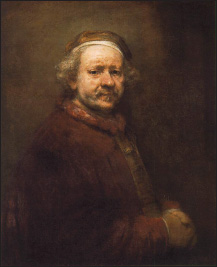
Self-Portrait at the Age of 63
1669, The National Gallery, London
86 x 70.5, Oil on canvas
Around the age of 14, Rembrandt was sent to the University of Leiden, one of the most distinguished centers of learning in Europe. But he did not flourish in academia and within months he convinced his parents to allow him to apprentice himself to an artist so that he could become one himself. His parents undoubtedly would have been reluctant because his education had prepared him for a respectable profession. Nevertheless, his talent must have been so apparent that they conceded to his request. Unfortunately, none of his early works have survived so it is impossible to assess his very early skills.
Accordingly, in 1620 Rembrandt became apprenticed to the best local artist, Jacob Isaaxszoon van Swanenburgh, with whom he stayed for about three years. Hungry to learn more, he persuaded his father to allow him to go to Amsterdam to study with Pieter Lastman, a reknowned painter of that era who specialized in colorful and dramatic historical and mythological compositions. Presumably Rembrandt thought Lastman had little to impart as he only stayed for six months before returning home to set up his own studio as an independent artist.
Back in Leiden he shared a workshop with his close friend and fellow artist, Jan Lievens. Jan, too, had been sent to Amsterdam to study with Pieter Lastman, staying for two years. At the time they worked together, the two young artists employed a very similar style, especially their use of light and shadowvery much in Caravaggios styleand their preference for grand, theatrical, exotic settings. They are thought to have collaborated in creating over 25 works comprising drawings, paintings, and etchings. They shared models and painted portraits of each other. Both young artists made a reputation for themselves as artists to watch. In later years, and perhaps even still, their paintings from this period have frequently been misattributed to the other.
In the past the Catholic Church had been the great patron of artists, but that changed with the Protestant Reformation. By the 17th century the Netherlands had thrown off its Spanish oppressors and grown into a wealthy mercantile country with a thriving middle class that appreciated and commissioned art from Dutch paintersespecially portraits and family groupings.
At first, Rembrandt specialized in Biblical and historical figure paintings, principally of old men. These were successful, and when he was only 21, in February 1628, Rembrandt accepted his first pupil, Gerard Dou. One year later, Rembrandt was visited by the diplomat and scholar Constantijn Huygens, the personal secretary of Prince Frederik Henry of Orange. Huygens suggested Rembrandt and Lievens would both benefit from a visit to Italy toobserve the artistic talent of that region.
The pair disagreed, arguing that the talent displayed in the Netherlands was more than sufficient to nurture their talent. Huygens wrote of the pair, I venture to suggest offhand that Rembrandt is superior to Lievens in his sure touch and in the liveliness of emotion. Conversely, Lievens is the greater in inventiveness and audacious themes and forms. Huygens must have preferred Lievens because he invited him to visit The Hague to paint his portrait.
The partnership ended in 1631 when Lievens went to England, hoping to earn his living at the court of King Charles I, and when Rembrandt moved to Amsterdam. Since that time, Rembrandt overshadowed his friend, although both ended up widowed and povertystricken in Amsterdam at the end of their lives.
Rembrandts first important portrait was commissioned in 163031 by Nicolaes Ruts (), an Amsterdam merchant who earned his fortune trading with Russia, which explains the rich furs he is wearing in Rembrandts portrait of him. Rembrandt was then 25 years old and a recognized rising star of the Dutch art world. Rembrandt and Hendrick van Uylenburgh, an influential Amsterdam art dealer, formed a mutually beneficial business partnershipvan Uylenburgh would find and secure the clients and Rembrandt would paint their portraits. On his move to Amsterdam Rembrandt lodged in van Uylenburghs home in Breestraat.
Next page
